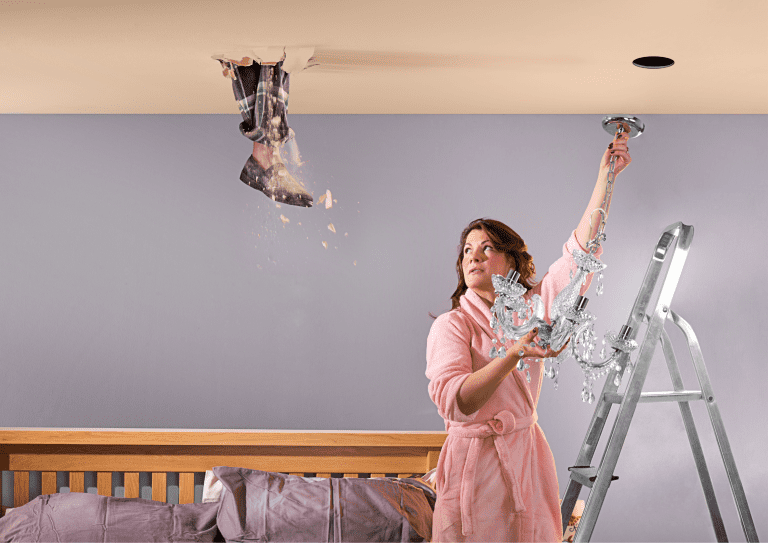Buildings and Contents Insurance

"I'm a Specialist Mortgage Advisor who can help your property dreams come true."
Ross McMillan
Blue Fish Mortgage Solutions
As a former estate agent of almost 15 years, I now use my vast experience, insider knowledge and access to dozens of lenders to help people like you:
- Secure the right mortgage for your circumstances.
- Successfully master the Scottish property buying process from start to finish.
- Achieve your property ambitions - however big or small
Get in touch for a no-obligation chat about how I might be able to help you.
YOUR HOME MAY BE REPOSSESSED IF YOU DO NOT KEEP UP REPAYMENTS ON YOUR MORTGAGE.
Some Buy to Let mortgages are not regulated by the Financial Conduct Authority.
Home » Insurances » Buildings and Contents Insurance
Table of Contents

Buildings and contents insurance is a type of insurance policy that is designed to protect your home and its contents from unexpected events that could result in financial loss. This type of insurance is commonly referred to as home insurance in the United Kingdom.
What is Buildings Insurance?
Buildings insurance covers the structure of your home and any permanent fixtures and fittings, such as walls, roof, floors, windows, and doors. This type of insurance policy is designed to protect you from financial loss in the event of damages to your home caused by unexpected events.
Typically, buildings insurance covers a range of risks, including damage caused by natural disasters such as floods, storms, or earthquakes, as well as damage caused by fires, theft, or other incidents. It may also provide coverage for the cost of rebuilding or repairing your home in the event of a total loss.
More specifically, buildings insurance may cover the following:
Structural damage to your home: This includes damage caused by natural disasters such as storms, floods, earthquakes, or subsidence.
Damage caused by fire or smoke: This includes damage caused by fires, smoke, or explosions.
Theft or vandalism: This includes damage caused by theft or vandalism to the structure of your home or any permanent fixtures and fittings.
Accidental damage (optional): This includes damage caused by accidental events such as a broken window or a water leak.
Alternative accommodation: If your home becomes uninhabitable due to damage or loss, buildings insurance may cover the cost of alternative accommodation while repairs are being made.
What does Buildings Insurance not cover?
While buildings insurance covers a wide range of risks, there are some things that it typically does not cover. Here are some common exclusions that may apply to buildings insurance policies:
General wear and tear: Buildings insurance is designed to protect against unexpected events, so it typically does not cover damage that occurs due to normal wear and tear or lack of maintenance.
Cosmetic damage: Buildings insurance typically does not cover cosmetic damage, such as scratches or dents, that do not affect the structural integrity of your home.
Gradual damage: Buildings insurance may not cover damage that occurs gradually over time, such as damage caused by damp or rot, unless it is due to an unexpected event such as a burst pipe.
Faulty workmanship: Buildings insurance may not cover damage caused by faulty workmanship or poor construction, such as poor quality materials or inadequate design.
Neglect: Buildings insurance may not cover damage caused by neglect, such as failing to maintain your home or failing to take precautions to prevent damage.
Acts of war or terrorism: Buildings insurance typically does not cover damage caused by acts of war or terrorism.
It is important to carefully review the terms and conditions of your buildings insurance policy to understand what is and is not covered.
Speak to an expert!
Contact me, Ross McMillan, the owner of Blue Fish Mortgage Solutions today for expert advice and guidance on your unique mortgage and property needs. I will work with you one-on-one to help you find the right solution for your specific needs. With my expertise and industry connections, you can rest assured that you are in good hands when it comes to securing the financing you need for your property.

What is Contents Insurance?
The coverage provided by contents insurance can vary depending on the policy and the provider, but it typically covers a range of risks, including:
Theft: Contents insurance provides coverage for loss or damage caused by theft, including forced entry into your home.
Accidental damage (optional): Some contents insurance policies offer cover for accidental damage to your possessions caused by spills, breakages, or other mishaps.
Natural disasters: Contents insurance may provide coverage for damage caused by natural disasters such as floods, storms, or earthquakes.
Fire and smoke damage: Contents insurance provides coverage for loss or damage caused by fire, smoke, or explosions.
Malicious damage: Contents insurance may provide coverage for damage caused by vandalism or other malicious acts by someone else.
In addition to standard coverage, many contents insurance policies offer optional extras, such as cover for specific items such as jewellery, laptops, or bicycles, and personal possessions outside the home.
As well as reviewing the terms and conditions of your policy to ensure that you are adequately covered for your specific needs, you should also carefully consider factors such as the level of excess, which is the amount you would have to pay towards a claim, and the level of coverage for specific items or events.
What does Contents Insurance not cover?
Contents insurance typically covers a range of common risks, however, there are some events and items that may not be covered by contents insurance policies. Some common exclusions include:
Wear and tear: Contents insurance policies typically do not cover damage or loss caused by normal wear and tear or deterioration of items.
Deliberate damage: Damage caused deliberately by you or someone you have allowed into your home may not be covered by your policy.
High-value items: Contents insurance policies may have a limit on the amount they will pay out for high-value items such as jewelry, art, or antiques. If the value of these items exceeds the limit, you may need to take out separate coverage.
Business items: Contents insurance policies may not cover items used for business purposes such as laptops, printers, or office furniture.
War or terrorism: Contents insurance policies may not cover damage or loss caused by war or acts of terrorism.
Pets: Damage caused by pets may not be covered by your policy.
As with all forms of insurance it is – once more – vital to review and understand the terms and conditions of your contents insurance policy to understand what is and is not covered.
Is it compulsory to have Buildings & Contents Insurance in the UK?
Technically, no, having Buildings and Contents Insurance is not compulsory in the UK, but it is highly recommended.
Each policy can be taken out separately and contents insurance is entirely voluntary in all circumstances, however, if you have a mortgage on your property, all mortgage lenders in the UK will definitely require and insist you have adequate buildings insurance as a condition of the loan….. so, in effect, it is practically then compulsory for buildings insurance to be in place if you already have or will have a mortgage on your property.
In most cases, this condition and respsonsibility for this will need to be met by you as the homeowner, however, in some circumstances (typically with blocks of flats) a common buildings insurance may be in place which may be adequate for this purpose and individual cover not required.
It is important that you are aware and understand who is responsible for the correct cover being in place and ensure that it is, as breaching your mortgage conditions can have serious consequences. As part of the conveyancing process, your solicitor is likely to ask for evidence that this condition of the mortgage offer is being met before allowing things to complete.
Regardless of whether compulsory or not, without insurance, you could be at serious risk of financial loss if your home or belongings are damaged or lost due to unexpected events such as fire, flood, or theft.
Buildings and contents insurance can therefore provide you with financial protection against these types of risks, giving you peace of mind and helping you to cover the cost of repairs or replacements if something goes wrong.

What optional extras may be offered as part of a Building and Contents Insurance policy and what do these extras cover?
Building and contents insurance policies may offer various optional extras that you can add to each individual policy to increase the level of protection or to customize your coverage. Here are some examples of optional extras that may be offered:
Accidental damage cover: This provides coverage for accidental damage to your property or belongings, such as spilling a drink on your sofa or dropping your phone.
Legal expenses cover: This covers legal costs and fees associated with disputes, such as boundary disputes, employment disputes, or personal injury claims.
Home emergency cover: This provides coverage for emergencies in your home, such as a burst pipe or broken boiler, and may offer 24/7 call-out service.
Personal possessions cover: This provides coverage for personal belongings that you take outside of your home, such as your phone, laptop, or jewellery.
Bicycle cover: This provides coverage for your bicycle against theft or damage, whether it is at home or away from home.
Contents away from home cover: This extends your contents insurance to cover your belongings while you are away from your home, such as on vacation.
High-value item cover: This provides extra coverage for high-value items, such as jewellery, art, or antiques, that may exceed the standard coverage limits of your policy.
It’s important to note that these optional extras may come with additional costs, so you should carefully consider your needs and budget before adding them to your policy.
What factors determine the cost of Buildings and/or Contents insurance?
The monthly or annual premium for buildings and contents insurance in the UK is determined by several factors, including:
Rebuild cost of the property: The rebuild cost of your property is the amount it would cost to completely rebuild it from scratch. This is different from the market value of your property, which reflects the price it would sell for in the current market. The rebuild cost is used to calculate the cost of the buildings insurance portion of your policy. You should note that many insurers will have a minimum amount of cover that may be above the actual reisntatement value but this has little difference on the actual cost of insurance in most cases.
Value of contents: The value of your contents is the total value of all your possessions, including furniture, electronics, and other personal belongings. The higher the value of your contents, the more you can expect to pay for contents insurance.
Location: The location of your property can impact the cost of your insurance premium. If you live in an area with a high crime rate or a history of flooding or subsidence, for example, you may pay more for your insurance.
Type of property: The type of property you own can also impact the cost of your insurance premium. For example, if you live in a thatched-roof cottage or a listed building, you may pay more for buildings insurance due to the higher cost of repairs or rebuilding.
Security features: The security features of your property can impact the cost of your insurance premium. If you have installed burglar alarms, smoke detectors, or CCTV cameras, for example, you may qualify for discounts on your premium.
Insurance excess: The insurance excess is the amount you agree to pay towards any claim you make. The higher your excess, the lower your premium may be.
Claims history: Your claims history can also impact the cost of your insurance premium. If you have made several claims in the past, insurers may view you as a higher risk and charge you a higher premium.
It’s important to note that different insurers may weigh these factors differently when calculating your premium, so it’s always a good idea to compare policies from different providers to find the right deal for your needs.

What five key factors should you be aware of when buying Buildings and Contents Insurance?
-
Be honest: It’s important to be honest with your insurer about any unusual features or hazards in your home, to avoid potential claim rejections.
-
Read the small print: Carefully read the policy documents and ask for clarification if needed to understand what is and isn’t covered.
-
Keep your policy up to date: Regularly review your policy to ensure you have enough coverage, especially if you have made improvements to your home.
-
Don’t skimp on cover: Avoid underinsuring your home and make sure you get the right policy for your needs, even if it costs a bit more.
-
Compare policies: Shop around and compare policies from different insurers to find the best deal for your needs, rather than simply automatically renewing your existing policy.
Conclusion
Buildings and Contents Insurance can be an essential to protect your home and belongings from unexpected events that could cause financial loss. While it is not always a legal requirement, having insurance can provide peace of mind and financial security in case of fire, flood, theft, or other damage to your property or possessions and if a mortgage is involved then you simply must have adequate buildings cover or risk being in serious breach of your mortgage conditions.
With different levels of cover available, it is important to carefully review your policy and ensure that you have adequate protection to meet your specific needs but by doing so you can then rest assured that you are prepared for any unexpected events that may occur.

Let's Make Things Happen.
Take The First Steps Now And Request Your Initial Discovery Call.
Request your initial discovery call by filling out your details here and I will personally be in touch within 48 hours by text, WhatsApp or email to arrange your no obligation chat!

